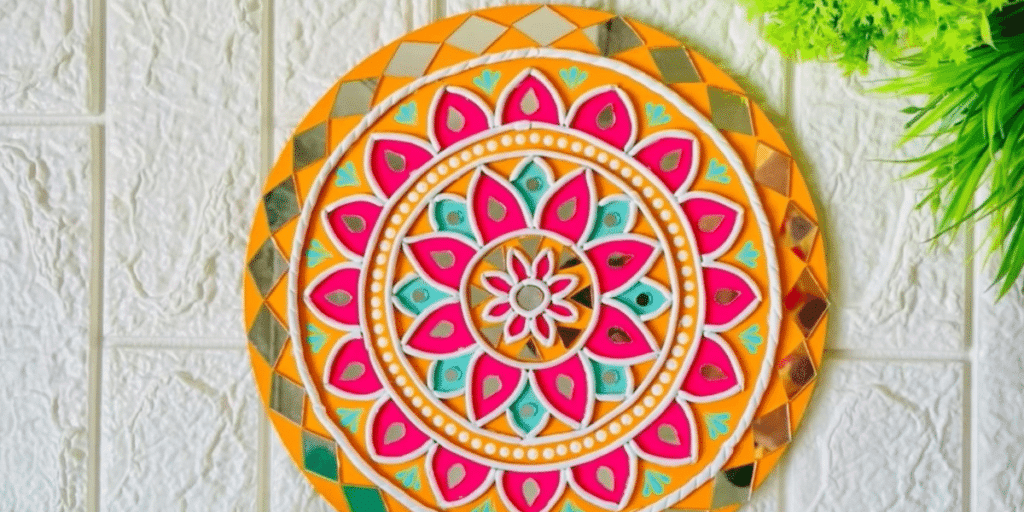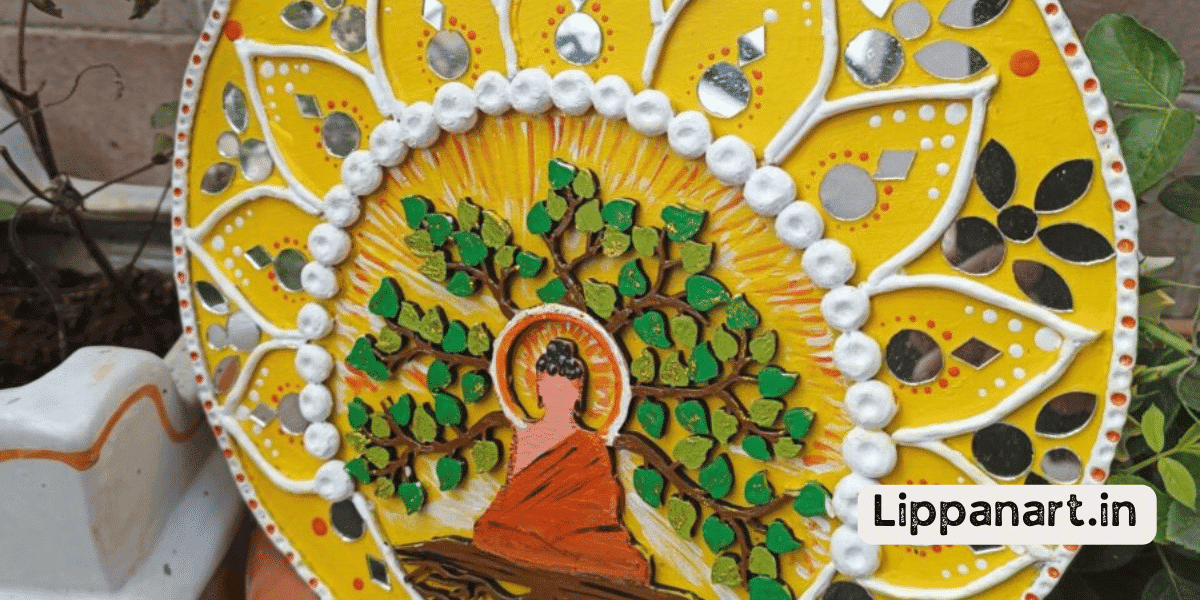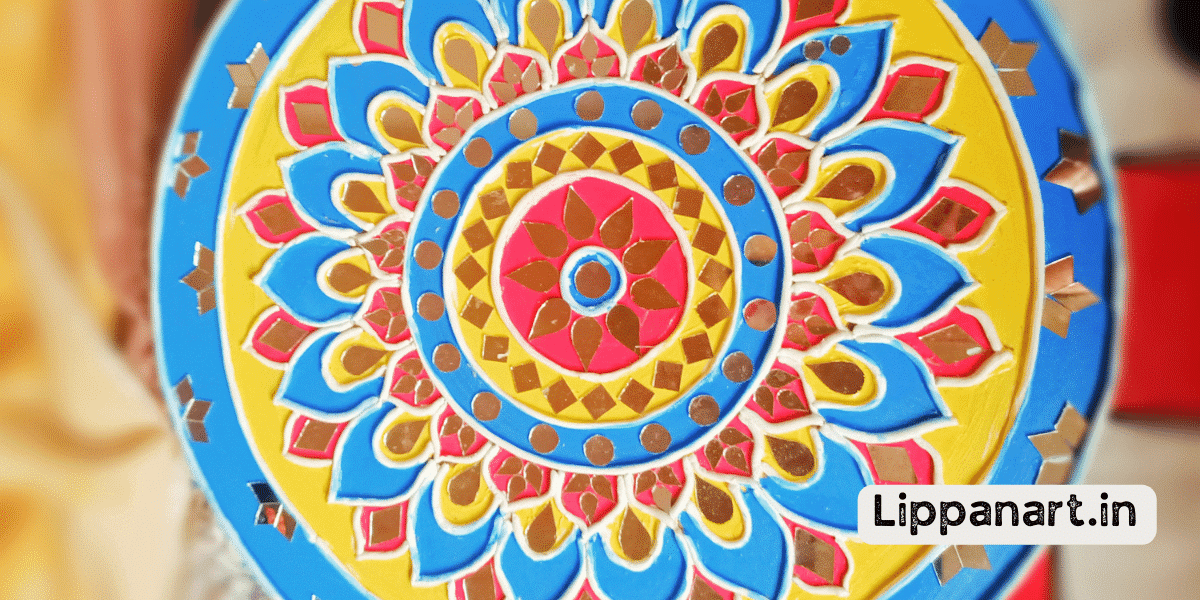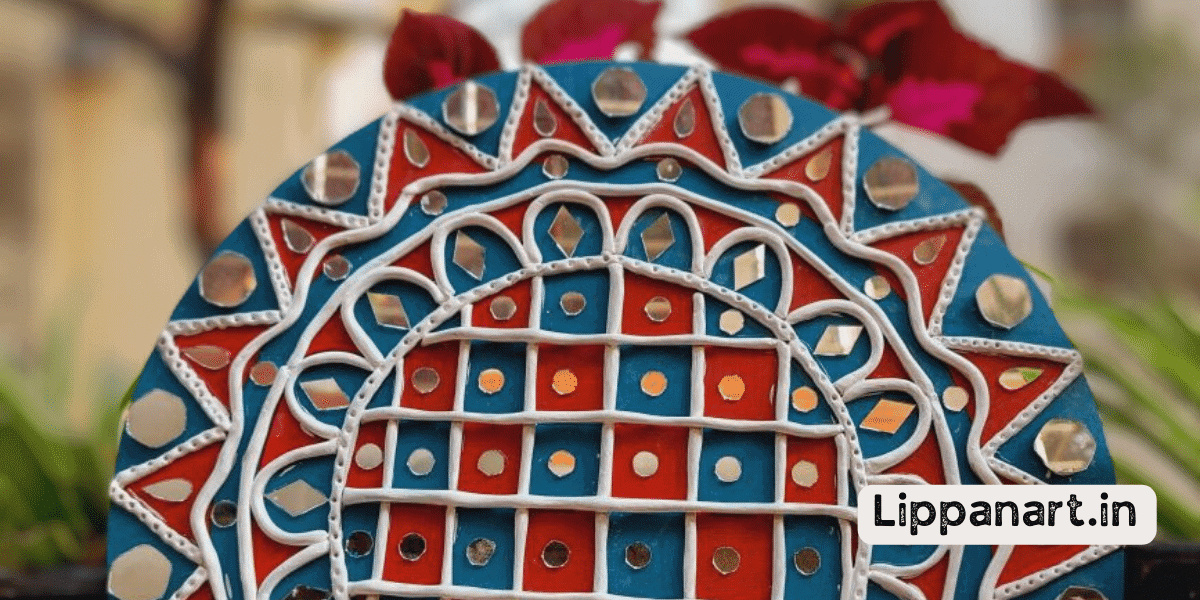‘A picture is worth a thousand words’ – and nothing is truer when it comes to creating stunning lippan art. You can make your work stand out from the crowd by following these tips to create visually pleasing and innovative pieces.
Learn how to use colour harmony, symmetrical patterns, texture and depth, precision in details, balanced compositions, natural materials, and lighting effects to make your artwork come alive!
Key Takeaways
- To achieve a visually pleasing outcome, try out different colour combinations that work in harmony with each other.
- Use symmetrical patterns and details to add interest and depth to the piece.
- To create an artwork that is stimulating to the touch, consider incorporating various textures and materials.
- Utilize lighting effects to enhance the appearance and impact of the lippan art.
Color Harmony

Creating lippan art requires understanding colour harmony to achieve a pleasing aesthetic. Start by selecting a few colours that work well together, such as shades of the same colour to create a harmonious gradient or complementary colours to create a vibrant contrast.
Muted hues can also add a subtle background to the piece. It’s important to try out various combinations and explore different possibilities to achieve a distinctive and visually appealing outcome.
Symmetrical Patterns
Creating symmetrical patterns for lippan art can be a creative and rewarding experience.
To create aesthetically pleasing art, you should utilize meaningful symbols, incorporate different decorating styles, use various colours, and experiment with different embellishment techniques.
Meaningful symbols will add interest and depth to the piece, while different decorating styles and colours will create contrast and visual interest.
Embellishment techniques can also be used to create a creative motif that adds depth and meaning to your piece.
- Editor’s Choice
- Best Seller
- Amazon Choice
Texture and Depth
You can incorporate depth and dimension into your lippan art by exploring textures and layering. Incorporate different tactile elements such as sequins, beads, yarns, and glitter to create unique ornamentation. Utilize complementary shapes and contrasting colours to create visual depth. Combining these elements will create an eye-catching piece.
Incorporating textures and other tactile elements won’t only make your art visually appealing, but it will also give your piece a unique tactile experience. Items such as beads, yarns, and feathers will give your work a unique texture that can be pleasing to both the eye and the touch. Experiment to find the right combination of elements to make your lippan art attractive and inviting.
When layering textures and colours, you can create a unique look. Combining and layering different colours and textures can create visually stimulating depth and movement in your piece. Creating something unique by mixing and matching different materials and colours is possible.
Experimenting with texture and depth can create a piece of lippan art that’s both aesthetically pleasing and tactilely stimulating. Take the time to explore different materials and techniques to create something that stands out. With planning and creativity, you can make something truly special.
Precision in Details
Creating lippan art requires precision and attention to detail. To achieve an aesthetically pleasing look, incorporate contrasting shapes, vibrant colours, shaped motifs, and intricate designs. Bold lines can add depth and contrast, while vibrant colours and shapes can create an eye-catching visual. Intricate designs with motifs can help to accentuate the details in the lippan art.
When creating designs, it’s essential to pay attention to the details. For example, a simple shape can be transformed into a complex one by adding details, such as an intricate border or swirls. It’s also important to consider the balance of the art. Contrasting shapes, such as circles and rectangles, can help to create a balanced composition.
When choosing colours, use bold colours to make the details in the art stand out. Avoid using traditional colours; instead, experiment with new hues, tints, and shades to create an interesting and vibrant composition.
- Editor’s Choice
- Best Seller
- Amazon Choice
Balanced Compositions
Consider the proportions and placement of shapes, colours, and motifs for a balanced composition.
To create aesthetically pleasing Lippan art, use minimalistic motifs and bold contrasts.
Start by sketching the design on paper to experiment with the elements and determine what works best.
Think about the layout of the elements and how the colours and shapes will interact.
Selecting the right combination of elements can greatly impact the artwork’s overall aesthetics.
You can create a balanced composition that all will admire with practice and experimentation.
Natural Materials
Creating aesthetically pleasing Lippan art with natural materials is easy with these tips. Experiment with clay to create unique proportions, and use eco-friendly materials like bamboo, seashells, and wood to weave intricate motifs. Combining shapes with these materials can add visual interest to a piece.
Here are the key steps to creating stunning art pieces with natural materials:
- Experiment with clay to form creative proportions and provide a sturdy foundation.
- Weave intricate motifs using natural materials like bamboo, seashells, and wood.
- Combine shapes with different natural materials to add visual interest.
- Using natural materials for creating art is a great way to ensure sustainability and eco-friendliness.
Follow these steps to create beautiful Lippan art with natural materials. Experiment with clay and combine shapes to create unique and creative pieces. Eco-friendly materials like bamboo and wood can add intricate motifs for a stunning, sustainable result.
- Editor’s Choice
- Best Seller
- Amazon Choice
Lighting Effects
To enhance the look of your Lippan art, lighting plays a significant role. Ensure that your art is well-lit to make it stand out.
Ambient illumination will create a calming atmosphere, while contrast lighting will add depth and drama.
You can also vary the light intensity to bring out the muted tones.
Experiment with different types of lighting to make the most out of your art and create an extraordinary impact on viewers.
Conclusion
To create truly stunning lippan art, it’s essential to practice color harmony. Incorporate symmetrical patterns and add texture and depth. Be precise in details and create a balanced composition. Use natural materials and incorporate lighting effects.
With these tips in mind, you’ll be able to create a masterpiece that’ll have everyone saying, ‘Wow, that’s beautiful!’
















